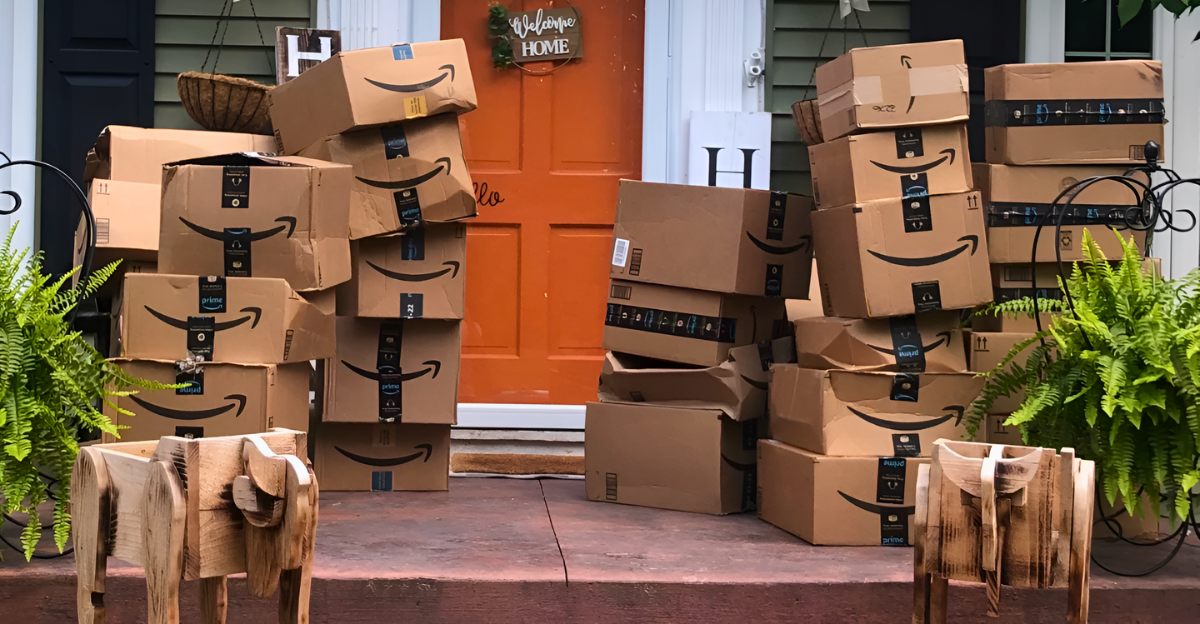
With Amazon Prime Day on the horizon, millions of shoppers are eager to get deals. However, this excitement also entices criminals hoping to take advantage of unsuspecting shoppers.
According to McAfee’s 2025 Global Prime Day Scams Study, more than 36,000 fake Amazon websites and more than 75,000 fraudulent scam texts have been detected in the lead-up to the eventful day.
These scams are designed to steal your personal and financial information, making it crucial for shoppers to stay vigilant.
AI-Powered Threats: A New Era of Deception

The sophistication of online scams has reached new heights, thanks to generative AI. According to NDTV, 71% of consumers are concerned about AI-enabled fraud during Prime Day, with many scams using deepfake videos and hyper-personalized messages to trick victims.
Pratim Mukherjee, Senior Director of Engineering at McAfee, warns, “Prime Day is a time of excitement, but it’s also become a prime target for scammers using AI to create hyper-personalised, convincing attacks that push people to click before they think.”
Five Red Flags Every Shopper Should Know

Cybersecurity experts have outlined five key warning signs that indicate a potential scam:
- Urgent language demanding immediate action (eg., “Your account will be closed within 24 hours!”).
- Payment requests for gift cards, wire transfers and cash.
- Claims that you need to “verify” or “legalize” your money.
- Transfers to “government agencies” during the same call.
- Pressure to keep the call secret or not hang up.
These warning signs can help you spot potentially fraudulent claims.
Amazon’s Official Guidance to Stay Safe

Amazon has issued its own set of security guidance in light of the spike in scams. The company emphasizes that it will never call or email you to request sensitive information, like passwords or payment details.
All payments should be made within Amazon’s official platform, and any requests for gift card payments are a huge red flag. If you receive suspicious messages, always verify directly on the Amazon app or on the Amazon website.
The Most Common Scam Tactics

Scammers are employing a variety of tactics to trick shoppers, including:
- Fake order confirmation emails or texts.
- Phishing messages mimicking Amazon notifications.
- Bogus refund or delivery updates.
- Deepfake influencer endorsements for fake products.
According to TechStory, there was a 80% increase in impersonation scams during Prime Day 2024, highlighting just how widespread these tactics have become.
Who is Most at Risk?

Research have indicated that younger adults (aged between 18–24) are more likely to encounter scams with a 17% exposure rate, compared with only 5% among seniors.
However, older adults are still at significant risk, especially as scammers focus their attention on platforms like TikTok Shop and Instagram Shopping.
The emotional and financial toll can be severe, with many victims losing money and nearly 20% too embarrassed to report the crime.
Essential Steps for Secure Shopping

To protect yourself, experts recommend several practical steps:
- Enable two-factor authentication for your Amazon account.
- Use strong, unique passwords.
- Only shop on secure websites (look for “https” and the padlock icon).
- Regularly check your bank and credit card statements
Trust your instincts — if a deal seems too good to be true, it probably is.
How AI Is Transforming the Scam Landscape

Artificial intelligence has made scams more convincing than ever. Abhishek Karnik, Head of Threat Research at McAfee says, “As AI continues to mature and become increasingly accessible, cybercriminals are using it to create scams that are more convincing, personalized, and harder to detect.”
From deepfakes to AI-driven phishing, the threats to online trust and safety are advancing at breakneck speed.
What to Do If You Suspect a Scam

If you receive a suspicious message, do not click on any links or provide information. Report the message to Amazon using their help pages, block the sender, and delete the correspondence.
If you think you’ve been scammed, contact your bank straight away and report the incident to the relevant authorities such as Action Fraud. Early action can help minimize financial loss and prevent further damage.
The Bottom Line: Stay Informed and Use Caution

While Prime Day sales inundate your email and social feeds, bear in mind that cybercriminals are out in full force as much as retailers are.
According to McAfee and NDT, the best defense is a combination of awareness, skepticism and smart security practices.
Pause before you click, verify every message, and use advanced protection tools to stay one step ahead. By staying informed and cautious, you can enjoy Prime Day without falling prey to scams.